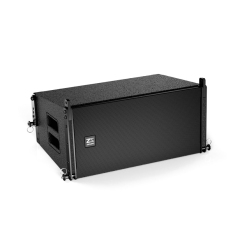Outdoor PA system clear sound relies on proper set up, equipment choice and environmental condition. Step one is selecting the power output. Because there are fewer reflective surfaces outdoors, typically more power is needed to create the appropriate sound levels of indoor venues. Typically medium to large outdoor events require a system of at least 2000 watts RMS, so the sound can easily be heard by all in attendance without distortion or no-show.
For outdoor applications, speaker hold cannot be overlooked for quality reproduction. Sound should reflect off of obstacles like crowds or barriers and be projected over the obstacle at 10 to 15 feet. Having the speakers at a slant downwards focuses its sound to where your audience is and this opportunity will also minimize some of that back reflection off nearby walls. Like so for instance outdoor concerts such as Lollapalooza will set up multiple speaker arrays that are strategically located to ensure even coverage over the entire audience area in an attempt to reduce dead zones where sound can weaken.
It transforms the entire auditory experience with line array speakers. Line arrays have abundant horizontal coverage, while low vertical dispersion for consistent sound over long distances. A normal line array configuration might have 8 to 12 speaker modules on each side, with all the angles carefully aimed at different parts of your head. With such compact size, the quality of sound can be maintained more than 100 meters away from stage (as in big events like Glastonbury).
Outdoor sound clarity depends a lot on the weather. Sounds travel differently according to the wind, humidity and temperature. The wind distribute sound unevenly or can carry it away; you should therefore orientate the speakers so that they face into the wind. Temperature and humidity will create temperatures that cause a gradient of faster to slower sound, bending the noise or refracting it into areas where you be less audible/clarity. By monitoring weather conditions and being able to adjust speaker angles in real-time as well as fine-tune the EQ parameters, that sound is kept intelligible throughout the event。

DSP (Digital Signal Processing) is a great way to make sure audio sounds clear. A DSP engine is used to make fine adjustments to a speaker's EQ, delay and other audio parameters in order to complement the unique physical aspects of an outdoor environment. For example, a low-frequency boost can make up for the inevitable loss of bass open spaces inherently create or adjusting your equalization carefully so as to not feed back doing either. During setup, realtime analyzer (RTA) monitoring of frequency response will guarantee that the system is delivering a balanced sound with even coverage through out its operating bandwidth.
Cabling and ConnectorsAdequate cabling is importantThe most crucial elements of theirs system are connections for a clear sound. And cable runs can be long for outdoor environments, introducing signal loss or interference. Balanced cables such as XLRs are ideal to combat this, but weatherproof network connectors will contain moisture and debris. And using cable ramps or ties to secure all cables helps prevent damage and minimizes tripping hazards.
Other power management considerations Outdoor PA systems usually involve good amounts of power, and drooping or inconsistency voltage can cause distortion or equipment failures. Avoid these problems by using heavy-gauge power cables and distributing your powerful loads evenly throughout the system. Backup generators or uninterruptible power supplies (UPS) offer further protection against loss of electricity, guaranteeing the system still gets to work while they are occurring.
Outdoor events read sound levels and adjust in real-time Sound clarity can be influenced by the number of people in a crowd, background noise and weather conditions. A central hub with remote monitoring capabilities enables sound engineers to change levels, EQ and other settings when needed ensuring consistent audio throughout the event. For example, outdoor festival covers thousands of people can make displacement changes in crowd density and we have to structure closely monitor this system with adjustments throughout the day will be too adjust clarity.
To summarize, the clarity of sound from an outdoor pa system is dependent on … Power output Speaker placement Weather conditions DSP adjustments Cabling Power management Real-time monitoring Taking these points into account and event organisers can provide high-quality audio, no matter how harsh the outdoor environment.
